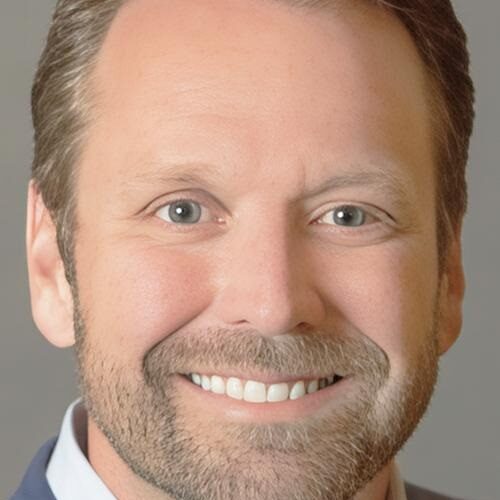Employers Adopt New Alternative to Group Coverage to Cut Health Insurance Costs
December 23, 2024

ICHRAs allow companies to compensate employees for insurance purchased in individual markets and may help clinical laboratories reduce patient bad debt
Bạn đang xem: Employers Adopt New Alternative to Group Coverage to Cut Health Insurance Costs
Both employees and their employers are frustrated with current options for health coverage. Now, a recent report from the HRA Council suggests that more employers are turning to Health Reimbursement Arrangements (HRA) as an alternative to traditional group insurance coverage to cope with the increasing cost of employee health benefits. This will be of interest to clinical laboratories that must collect copays/deductibles from patients. Health insurance arrangements that make it easier for patients to pay help labs reduce patient bad debt.
According to its website, HRA Council is “dedicated to improving and expanding health coverage options for millions of workers by giving employers better ways to offer workers health insurance.”
The non-partisan advocacy organization, which consists of insurers, brokers, employers, and other stakeholders, estimates that only 500,000 workers are currently covered by these plans nationwide. That number of workers represents a 29% increase since 2023, with most of the growth coming from large employers.
Under HRA arrangements, employers provide non-taxed financial assistance to workers who then obtain coverage for themselves and/or their families in the insurance marketplace.
One type of plan, known as the Qualified Small Employer HRA (QSEHRA), was established as part of the 21st Century Cures Act, which Congress passed in 2016. QSEHRAs, however, are available only to businesses with 50 or fewer full-time (or equivalent) employees. Most of the recent growth has come from Individual Coverage HRAs (ICHRA), established under regulations issued by the Trump Administration in 2019.
In contrast to QSEHRAs, ICHRA plans are available to companies of any size, HRA Council notes.
“It’s a way to offer coverage to more diverse employee groups than ever before and set a budget that controls costs for the companies,” HRA Council Executive Director Robin Paoli told KFF Health News.
“ICHRAs are bringing a fresh new approach for employers who need a new or different solution to enable providing health benefits to their employees,” said Andrew Reeves (above), senior vice president and general manager, Gravie ICHRA, in the HRA Council report. Gravie is one of the health benefits companies allied with HRA Council. “Through the defined contribution approach that ICHRA brings, employers are now able to set their budget and enable employees to make their own individual decisions on the coverage they need for themselves and their families. ICHRAs are delivering an approach to employee benefits that is both stable yet at the same time flexible for the individual,” he added. These types of alternatives to traditional employer-sponsored health plans may also help clinical laboratories and anatomic pathology groups reduce patient bad debt. (Photo copyright: LinkedIn.)
How ICHRA Plans Work
As explained by HRA Council, “an ICHRA allows the employer to allocate to each employee a specific amount of money to spend on ACA [Affordable Care Act]-compliant individual health insurance plans. Employees then purchase their own plans, and the employer reimburses them up to the allocated amount.”
The rule allows employers to define up to 11 classes of workers and offer different benefit packages to each. These benefits can be based on characteristics such as:
- geography,
- whether the worker is employed full-time, part-time, or seasonally,
- whether the worker is paid a salary or hourly wage, and
- whether the worker is covered by a collective bargaining agreement.
Xem thêm : Man Kills Friend, Burns Body To Fake Death, Cops Suspect An Insurance Plan
Employers can choose to offer ICHRAs to some classes and traditional group plans to others. Within each class of employee, employers also can vary compensation based on age—up to a 3-to-1 ratio—since older workers will generally pay higher premiums than younger ones.
For example, the HRA Council explains, “if an employer offers its 26-year-old employee $300 per month, it could only offer the oldest employee up to $900 per month.”
However, some consumer advocates have pointed to potential downsides of these plans, KFF Health News reported.
Raising Concerns
Analysts affiliated with USC-Brookings Schaeffer Initiative for Health Policy raised concerns about ICHRAs in a 2018 Brookings white paper and in a 2019 commentary.
The rule, they concede, provides guardrails to prevent companies from moving only their sicker employees—the ones most costly to cover—to the individual market. For example, employers must offer the HRAs to entire classes of workers, and the rule prevents them from defining classes that contain only a small number of employees.
However, the authors contend that employers can still target HRAs to classes more likely to be sick while offering group coverage to other classes. In general, they argue, employers with sicker workforces will be most attracted to HRAs. As these workers enter individual insurance markets premiums could rise, particularly “in states that today have individual markets with a relatively low-cost mix of enrollees,” the authors wrote.
Although the rule allows companies to vary compensation based on age, older workers will still pay more for insurance unless the contribution covers the entire cost of the premium. This would likely make the HRAs “less attractive to employers by making it harder for employers to avoid leaving some workers worse off,” the authors noted.
The Brookings authors also observed that workers who accept the contributions are ineligible for premium tax credits enabled by the Affordable Care Act.
KFF Health News noted other potential downsides as well. “Plans sold on the individual market often have smaller provider networks and higher deductibles than employer-sponsored coverage. Premiums are often higher than for comparable group coverage.”
In addition, ICHRAs can create administrative headaches that have prompted some employers to return to group plans. “Instead of a company paying one group health plan premium, dozens of individual health insurers may need to be paid,” KFF Health News reported. “And employees who’ve never shopped for a plan before need help figuring out what coverage works for them and signing up.”
One Employer’s Example
KFF Health News highlighted one organization that appears to be happy with its newly adopted ICHRA: Lycoming College in Williamsport, Penn. The school, which provides health benefits for 400 faculty, staff, and family members, saved $1.4 million in healthcare costs in the first year after implementing the plan. “Employees saved an average of $1,200 each in premiums,” KFF noted.
Xem thêm : Have long COVID? Here’s what to know about disability insurance
Prior to the transition, one employee with a family of five paid $411 per month for a plan that had a $5,600 annual deductible. Under the ICHRA, he pays $790 per month with no deductible.
“It’s nice to have the choice to balance the high deductible versus the higher premium,” he told KFF Health News. Before, “it was tough to budget for that deductible.”
Which is where the benefit to clinical laboratories comes back in. Making it easier and affordable for patients to pay their co-pays and deductibles also means more patients showing up at labs for doctor ordered tests and blood draws.
—Stephen Beale
Related Information:
Increasingly Popular Benefits Model Trends Among Large and Small Businesses–and Their Employees
Some Employers Test Arrangement to Give Workers Allowance for Coverage
Why Oscar Health Co-Founder Mario Schlosser is bullish on ICHRA
The Shift from Traditional Employer-Sponsored Coverage to ICHRA: The Health Plan Perspective
HealthCare.gov Hopes to Profit from ICHRA Boom
New Report Illustrates How ICHRA Is Reshaping Health Benefits for Employers and Employees Alike
Evaluating the Administration’s Health Reimbursement Arrangement Proposal
The Trump Administration’s Final HRA Rule: Similar to the Proposed but Some Notable Choices
Nguồn: https://propertytax.pics
Danh mục: News
